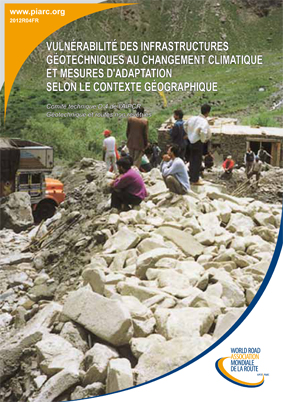Vulnerability of Geotechnical Infrastructure to Climate Change and Adjustment Measures According to the Geographical Context

The report identifies foreseeable damage and the measures to be taken in a geographical context where climatology and geomorphology are aggregated.
Five climate trends are covered: increase of average temperatures; decrease of average precipitation; increase of winter precipitation; increased intensity of extreme precipitation; and increased storm severity. These five trends result in thirteen induced general phenomena, to which nine types of road damage are linked.
The geomorphology approach is described by the absolute elevation and by a slope map in order to identify the instability areas in terms of hillside and erosion. This enables to identify several typical geomorphological main units.
Then the climatological and geomorphological approaches are crossed to indentify the key phenomena induced for each geomorphological unit and for each climate.
Twelve case studies illustrate the typology at a more local scale, with examples showing the vulnerability of the road to climate change, and the solutions to be developed.
Information sheet
- Date: 2012
- Author(s): Comité technique D.4 Géotechnique et routes non revêtues / Technical Committee D.4 Geotechnics and unpaved roads
- Domain(s): Environment / Road Earthworks
- Type: Technical report 2012R04EN
- PIARC Ref.: 2012R04EN